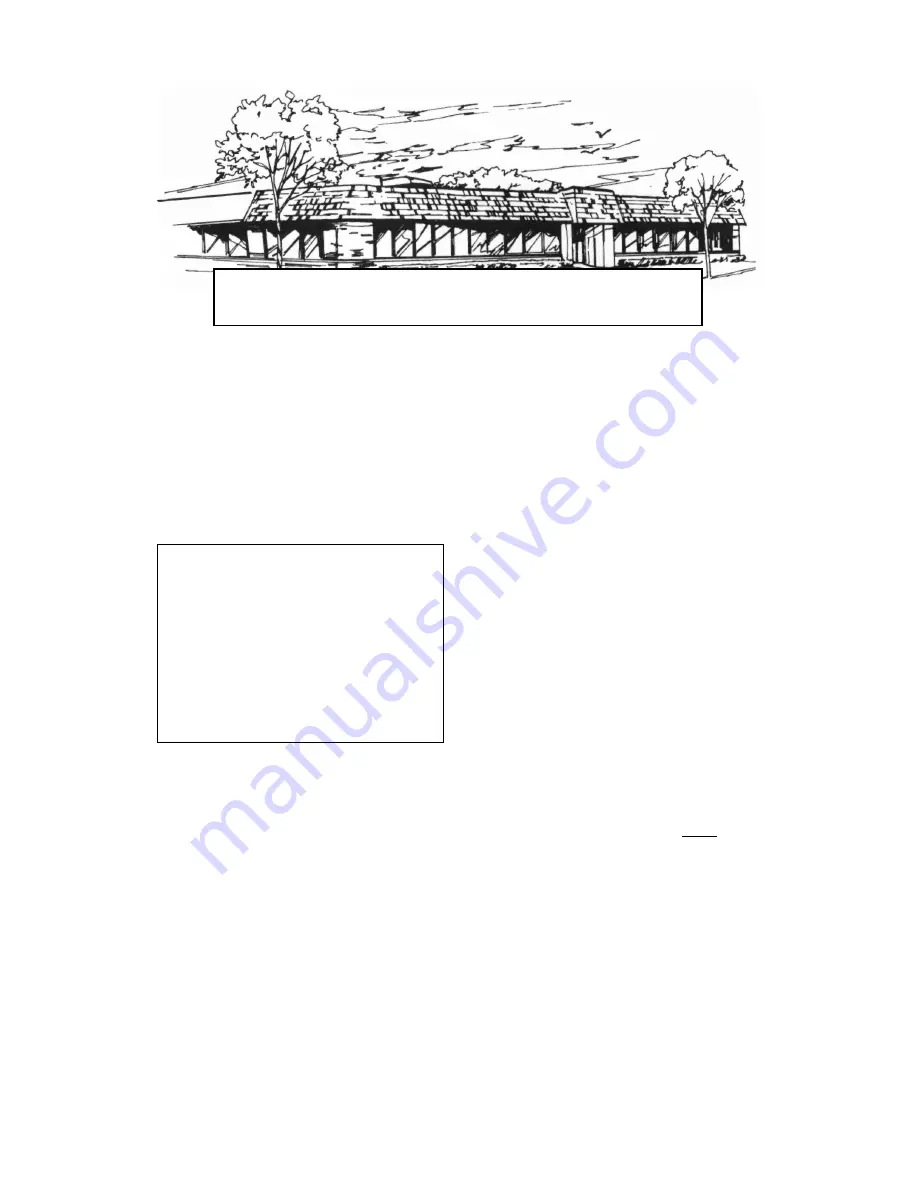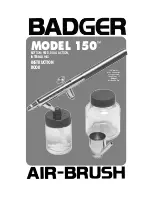
2
We at Badger Air-Brush Co. are extremely proud of
our people and our products. Our continued growth
and success is based upon stressing quality and
craftsmanship in the manufacture of our products. At
Badger Air-Brush Co. there is a sense of pride and
dedication to you that extends throughout our entire
organization.
Each airbrush is carefully machined, inspected, and
assembled by hand, then tested in actual use to be
sure it matches Badger’s high standards of quality.
This dedication to excellence enables us to stand
behind all of our products and offer the following
warranty on all of our airbrushes.
SPECIAL NOTE: Read instructions for proper care in handling and operation. Use in well
ventilated area to remove fumes, dust or overspray. Always read and follow Cautions and
Warnings on materials being sprayed. See back page for further information.
The Model 150
™
bottom feed is one of Badger’s
“Legendary” airbrushes. It is used by Fine Artists,
Illustrators, Fabric Designers, Custom Automotive
Painters and Professional Model Makers.
It can spray properly reduced artist acrylics, acrylic
enamel and lacquers, gouache, fabric colors, inks and
dyes, ceramic colors and glazes, water colors and of
course, Air-Opaque
™
airbrush colors.
SPRAY CHARACTERISTICS OF HEAD ASSEMBLIES
OF INTERNAL MIX AIRBRUSHES:
• F has the smallest opening for extra fine detailing
and will spray from a pencil line thickness to 1˝
(25.4 mm) wide. It is designed for use with
materials of a low viscosity–very thin acrylics, water
colors, gouaches, inks and dyes.
• M has a medium opening for fine detailing and will
spray a line from 1/16˝ (1.55mm) to 1-1/2˝ (38mm)
wide spray pattern. It will spray twice the amount of
materials as the F. This head will handle such
viscosities as thinned down acrylics, hobby
lacquers, enamels, etc.
• L has the largest opening and will spray 4 times the
amount of fluid as the F. It will spray a line from 1/8˝
(3.2mm) to 2˝ (50.8 mm) wide.The L is designed to
be used with materials of higher viscosity
(automotive paint, ceramic glazes, acrylics, etc.)
WARRANTY
Your Badger airbrush is warranted against all
manufacturing defects of both material and
workmanship for a period of one year from the
date of purchase. Any part or material that is
defective or worn so as not to be useable within
this period will be repaired or replaced at our
expense. This warranty does not cover damage
caused by negligence, accident or units which
have been abused or altered in any way. The
PTFE needle bearing carries a lifetime warranty
and free replacement.
READ INSTRUCTIONS CAREFULLY BEFORE OPERATING
TO OPERATE
1) Attach hose to air supply (compressor, aerosol propellant can, or CO
2
tank). A compressor or CO
2
tank
is more suitable for larger jobs or prolonged spraying. Holding air hose in hand, attach airbrush to air
hose, at hose end opposite air source, by gently turning in clockwise motion onto fitting. Finger tighten
air hose snugly onto airbrush.
2) Air pressure should be set between 15 to 50 p.s.i. (15 to 90 p.s.i. when using a braided airhose such
as 50-2011). The most efficient operating pressure for airbrushing is approximately 30 p.s.i. BADGER
offers an air regulator w/pressure gauge and moisture trap (50-054) that can be connected to any
compressor to allow for proper air pressure setting. BADGER offers a moisture trap only (50-051) for
usage when airbrushing in high humidity environments.
3) Attach jar or color cup, containing material to be sprayed, to the airbrush. Attach by inserting stem of
jar adapter or color cup into the jar connector tube located on the bottom front of the airbrush body.
Give the stem a slight counter clockwise turn to snug the jar/color cup securely into place. To remove
jar/color cup when finished pull down and rotate in a clockwise direction.
Once your air source is on, and your airbrush is properly connected and set up, you are ready to begin
airbrushing.
4) To begin operation of the airbrush depress the trigger. This will generate air flow through the airbrush.
Then, by drawing back on the trigger, paint (or whatever material is being sprayed) will be released.
The further the trigger is pulled back the larger the amount of paint that will be sprayed. The size of
line the airbrush will create is determined by the amount of paint being sprayed (how far the trigger is
being pulled back) and at what distance the airbrush is being held from the surface being sprayed . A


























